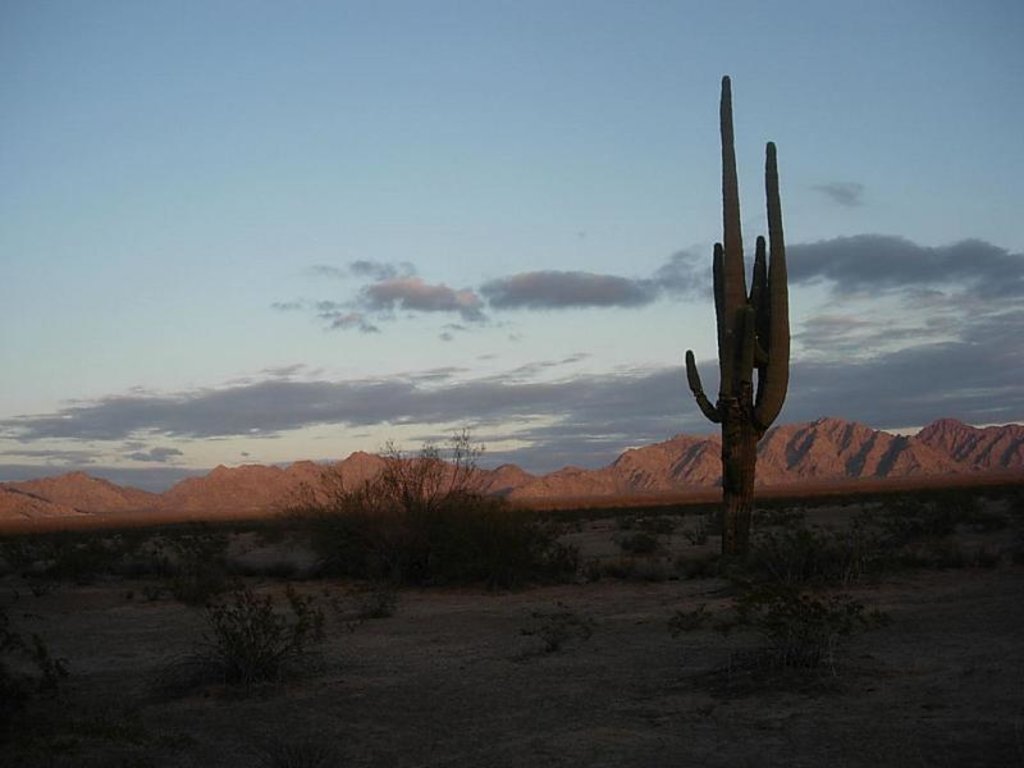Get PeakVisor App
Sign In
Search by GPS coordinates
- Latitude
- ° ' ''
- Longitude
- ° ' ''
- Units of Length

Yes
Cancel
Share ×

Scan the QR code and open PeakVisor on your phone
❤ Wishlist ×
Choose
Delete
The Cabeza Prieta Wilderness is situated in the southwestern part of the US state of Arizona. The protected region marks one of the most extreme desert terrains in the country and also helps support a variety of wildlife. There are 20 named peaks with Growler Mountains being the highest at 3,248 feet (990 m) tall and Buck Peak being the most prominent with 1,604 feet (489 m) of prominence.
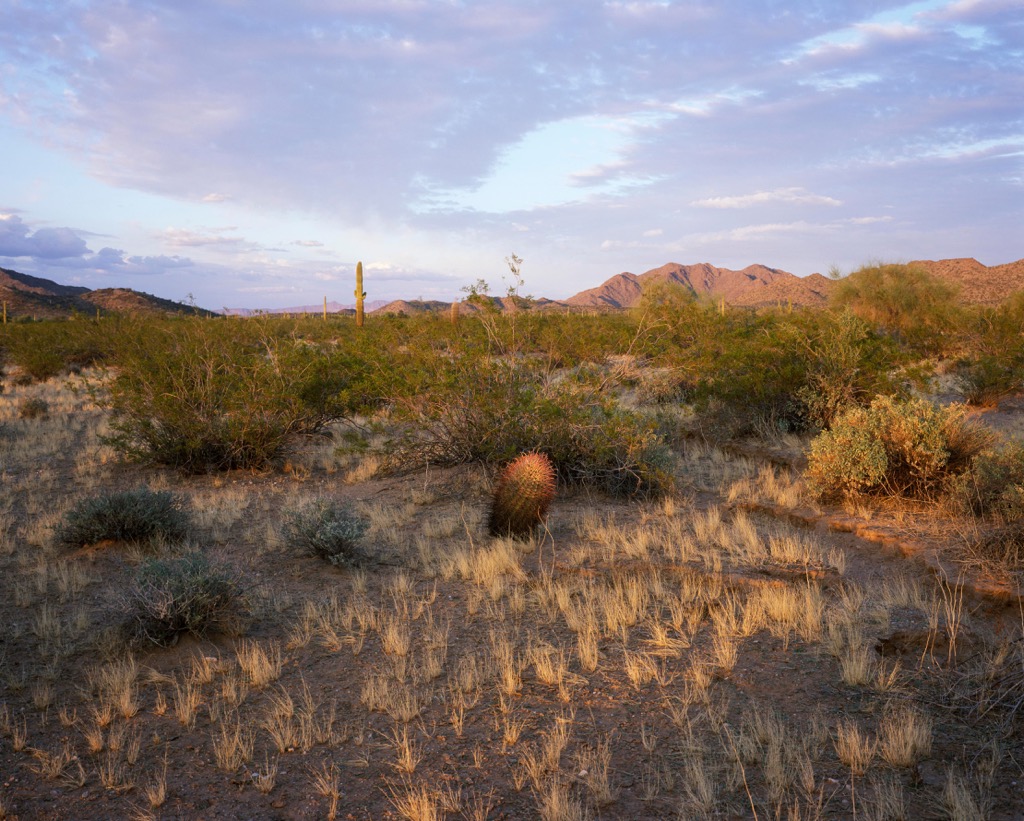
The Cabeza Prieta Wilderness is situated in the southwestern region of the US state of Arizona. Elevations range from around 700 feet (213 feet) up to the summit of Growler Mountains, with the protected region lying entirely within the Sonoran Desert.
The wilderness spans 803,418 acres (325,132 ha), encompassing roughly 93 percent of the surrounding Cabeza Prieta National Wildlife Refuge. This expansive protected region marks the largest wilderness area within the state of Arizona.
Within the northern stretches of the wilderness lie the Cabeza Prieta Mountains, which encompass roughly twenty percent of the protected region. The Cabeza Prieta National Wildlife Refuge is the third largest national wildlife refuge located in the contiguous 48 states.
To the north and west of the wilderness lies the Barry M. Goldwater Air Force Range. Directly south of the wilderness and national wildlife refuge lies the US-Mexico border while the Organ Pipe Cactus National Monument in the southeast.
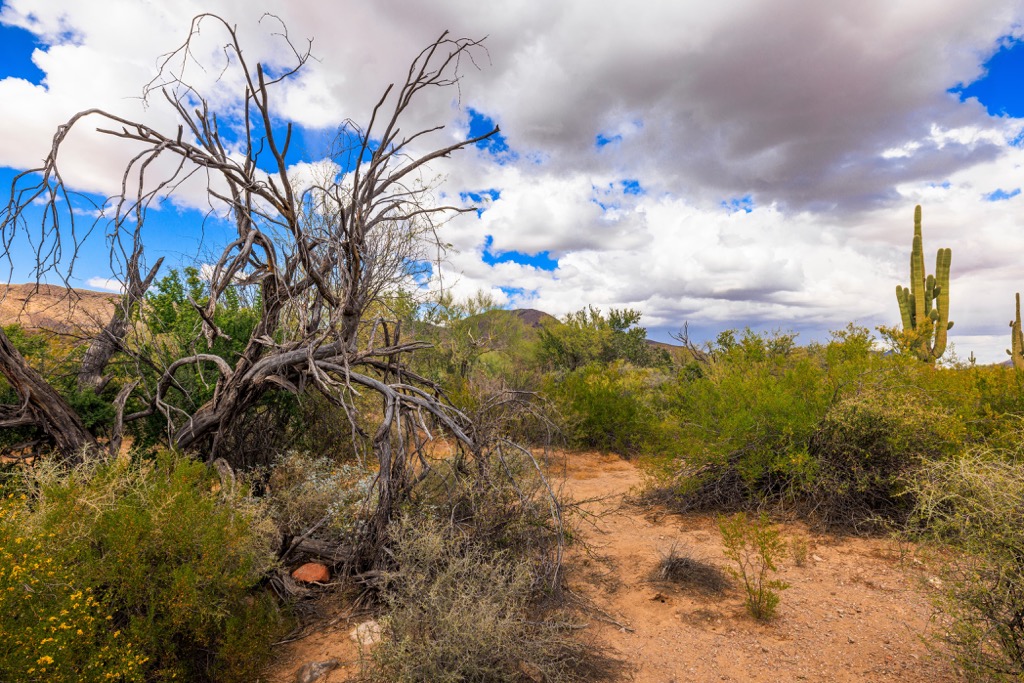
The rugged and mountainous regions of the wilderness are met with lava flows, sand dunes, and sweeping desert valleys. A majority of the wilderness features more gradual changes in elevation while large sections are relatively flat, populated by cacti and shrubs.
Mountains in the region are met with sweeping desert valleys along with lava flows and sand dunes. A majority of the landscape is marked by flat desert terrain, supporting various shrubs and cacti species. Due to the lack of rainfall and extreme temperatures, this region is often stated to be one of the most extreme and isolated desert landscapes in the country.
The Cabeza Prieta Mountains, that lie within the wilderness, mark the northern stretches of the Gran Desierto de Altar of Mexico. These mountains also mark some of the northern stretches of the Pinacate volcanic field .
Additionally, the Cabeza Prieta Wilderness is surrounded by popular outdoor recreation areas. The Sonoran Desert National Monument and South Maricopa Mountains Wilderness are located to the northeast while the Kofa Wilderness and Kofa National Wildlife Refuge are situated to the northwest. Directly east of the wilderness lies the Organ Pipe Cactus National Monument.
The entire wilderness, and the surrounding national wildlife refuge, lie within the Sonoran Desert. This desert region extends across southwestern Arizona and into portions of California, Baja California, and Mexico.
Geologically, the Sonoran Desert marks a subsection of the larger Basin and Range Province that spans north of the desert landscape across Utah, Idaho, Nevada, Arizona, and California. Formation of the ranges in the region began approximately 40 million years ago.
This section of land experienced widespread volcanic activity as the Pacific Ocean tectonic plate was slowly subducted beneath the North American tectonic plate. This subduct resulted in the Earth’s crust being continually folded and stretched, leaving behind numerous mountain ranges.
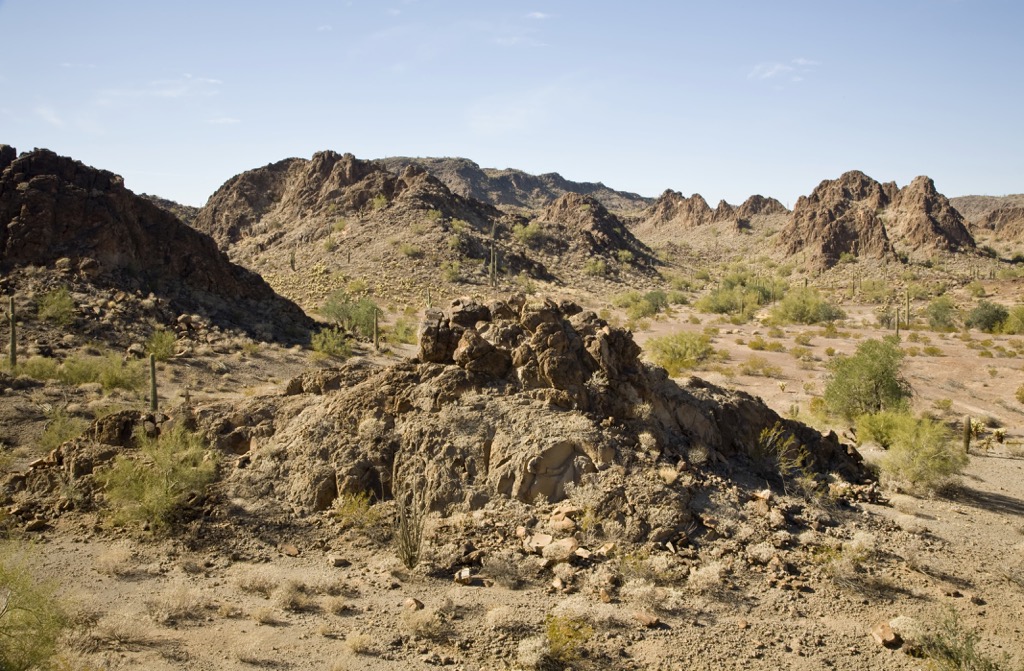
The vast majority of ranges in the Basin and Range Province and north to south trending. The alternating series of ridgelines and valleys is what has given this region its name. Volcanic activity occurred throughout the past 10 million years, further changing the desert landscape.
Monsoons and heavy rainfall carved out the mountains over the course of millions of years. Today, the terrain is marked by rock formations, sweeping basins, and craggy peaks.
Major peaks within the wilderness include Growler Mountains, Buck Peak, Growler Peak, and Cabeza Prieta Peak.
The wilderness helps support over 400 plant species and 275 animal species, showcasing a surprising amount of biodiversity despite the extreme weather.
Hikers may spot populations of Sonoran pronghorn, desert bighorn sheep, kangaroo rate, mule deer, rabbit, or pocket gopher. Other common animals in the wilderness include the desert horned lizard, side-blotched lizard, Great Basin whiptail, or one of six different species of rattlesnakes.
The desert weather is also ideal for supporting golden eagle, Western spotted skink, big brown bat, lesser long-nosed bat, and Morafka’s desert tortoise.
There are minimal plants located in the wilderness and the surrounding national wildlife refuge, though some species of grasses, shrubs, and cacti are able to withstand the harsh conditions. Some of the most common species include hedgehog cactus, saguaro cactus, chollas, mesquite, ocotillo and creosote bushes.
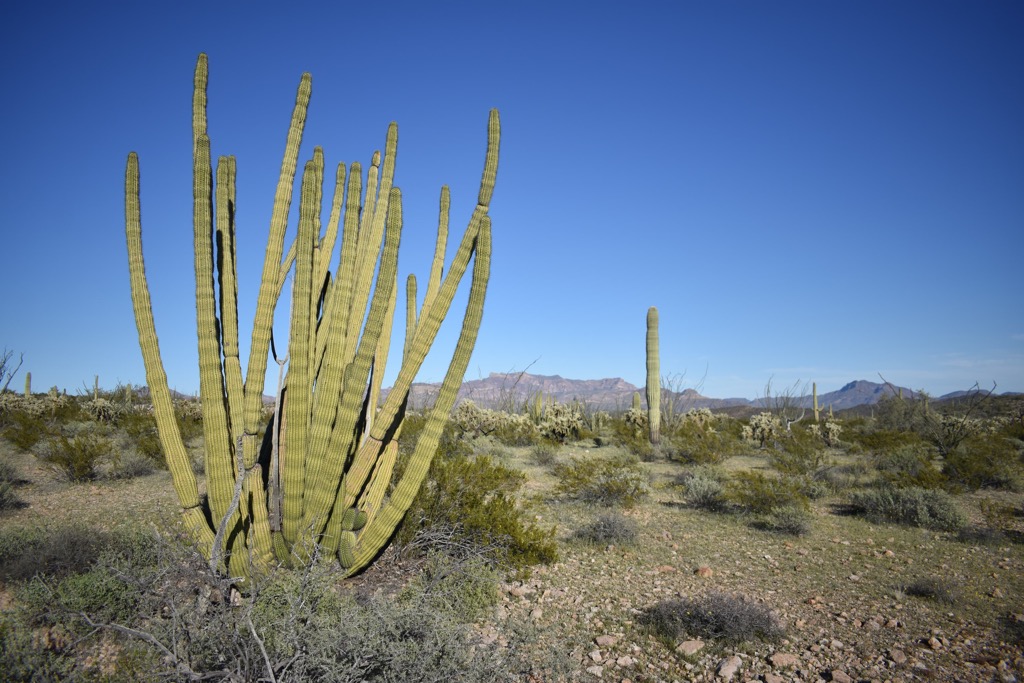
The land that surrounds the wilderness has been inhabited by humans for thousands of years. It is believed that this region has been inhabited for roughly 11,000 years, with the surrounding region featuring artifacts of the Mogollon, Sobaipuri, and Hohokam cultures.
This terrain marks part of the ancestral homelands of many peoples, including the Cocopah Tribe (Cocopah: Xawitt Kwñchawaay) and the Tohono O’Odham Nation. The Cocopah Tribe primarily lived near the Gulf of Mexico and along the Lower Colorado River, marking one of the seven descendant tribes of the Yuman language.
The Tohono O’Odham Tribal Nation historically inhabited land throughout present-day Arizona and northern Mexico. This region was roughly bound by the Gila River in the north and the San Miguel River Valley located to the east.
The Spanish explorer Hernando de Alarcon traveled along the Colorado River in 1540, an expedition that led to encounters with various different tribes in the region. Present-day Arizona was further explored by the Spanish missionary Eusebio Francisco who went on to found the Mission San Xavier del Bac near present-day Tucson in 1700.
Construction of railroads, westward expansion, and the California Gold Rush, brought a massive influx of settlers through the region during the 1840s. This land was declared part of the Mexican state of Sonora following the Mexican War of Independence.
Land was reallocated to the US in 1848 following the end of the Mexican-American War. This new border between the two countries divided the Cocopah Tribal lands. The Indigenous groups on either side were forced to end their Tribal unity in 1930.
The Indigenous peoples who remained in the region were continually attacked, harassed, displaced, and murdered by settlers who were often backed by the US government. Those who survived were forced onto reservations by the US Army.
In 1939, in order to help protect the endangered desert bighorn sheep, the Cabeza Prieta National Wildlife Refuge was established. The Cabeza Prieta Wilderness was eventually established in 1990.
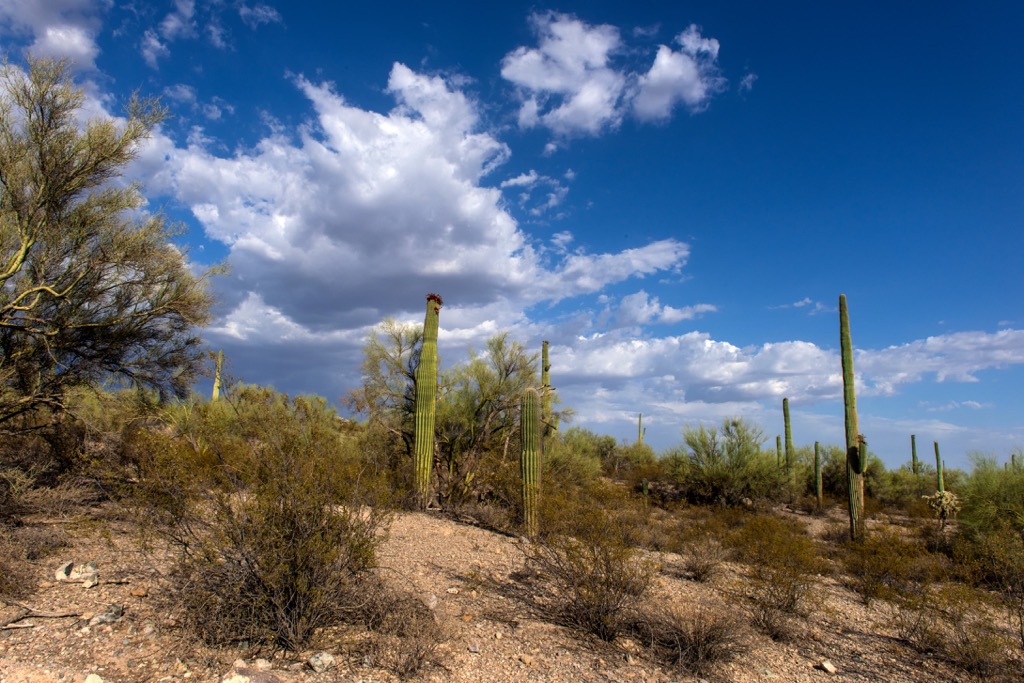
There are no defined trails in the wilderness or the surrounding region. Those visiting should note that there are no facilities offering water, sanitation, or gasoline. Those who travel in the area are encouraged to carry ample supplies in case of being stranded in the harsh conditions. Here are a few hiking areas in the surrounding region:
The Organ Pipe Cactus National Monument lies just east of the wilderness and is also an UNESCO biosphere reserve. True to its name, the monument marks the only place in the country where the organ pipe cactus grows in the wild. Below are a few popular trails in the monument:
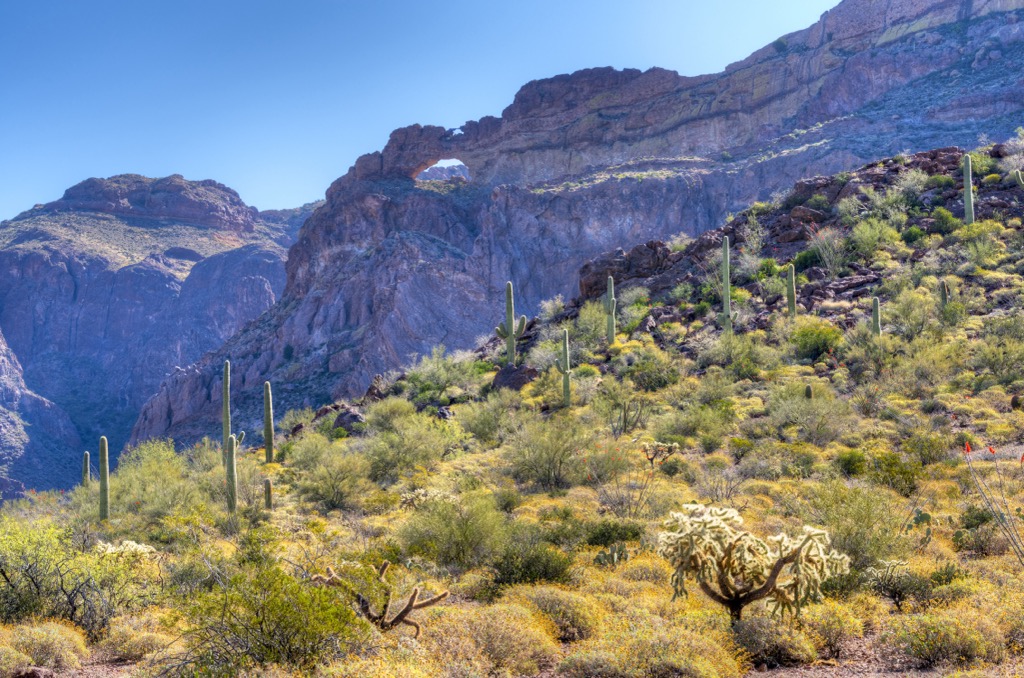
The Kofa Wilderness and Kofa National Wildlife Refuge lies a short drive north of the Cabeza Prieta Wilderness. This refuge was also established to help protect the desert bighorn sheep. There are numerous hiking trails of varying levels of difficulty.
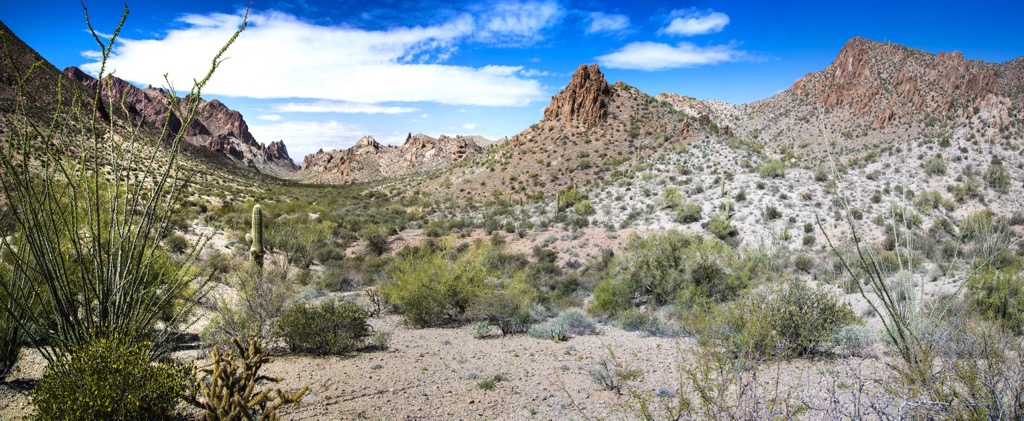
Looking for a place to stay near the Cabeza Prieta Wilderness? Here are some of the best cities and villages to check out in the region:
Yuma is a city that lies just northwest of the wilderness and national wildlife refuge. Situated along the Colorado River, Yuma is known for being the “Sunniest City of Earth”, boasting sunny days ninety-one percent of the year.
Home to around 100,000 residents, the plethora of sunshine has allowed Yuma to thrive on an agricultural economy. The surrounding landscape offers opportunities for mountain biking, hiking, rafting, and bird watching.
Visitors can explore the nearby Colorado River and the Imperial Sand Dunes which offer opportunities for off-roading.
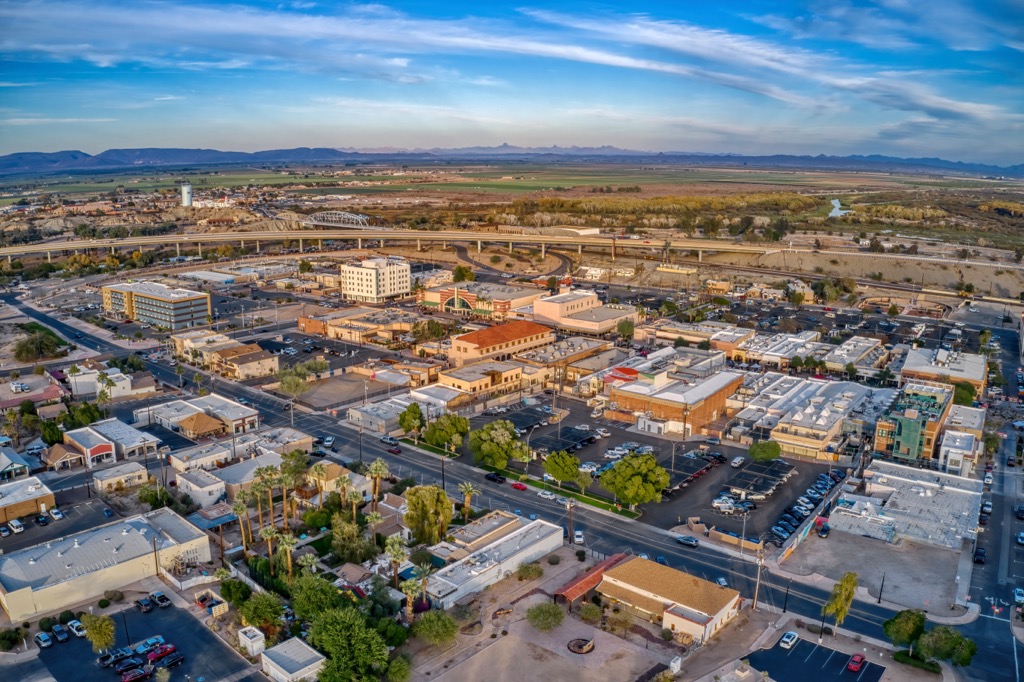
Phoenix lies just under a three hours drive northeast of the wilderness. Marking the closest major city to the protected region, Phoenix has a metro population of 1.6 million people and marks the most populous city in the state.
Despite its relatively large population, Phoenix is surrounded by protected lands, national forests, and national parks. Popular sites in the surrounding region include Tonto National Forest, Prescott National Forest and Sonoran Desert National Monument.
Along with a plethora of museums and galleries, Phoenix is also home to the famous Desert Botanical Garden. Visitors can also check out the Heard Museum which showcases the history, culture, and art of the Indigenous tribes of the region.
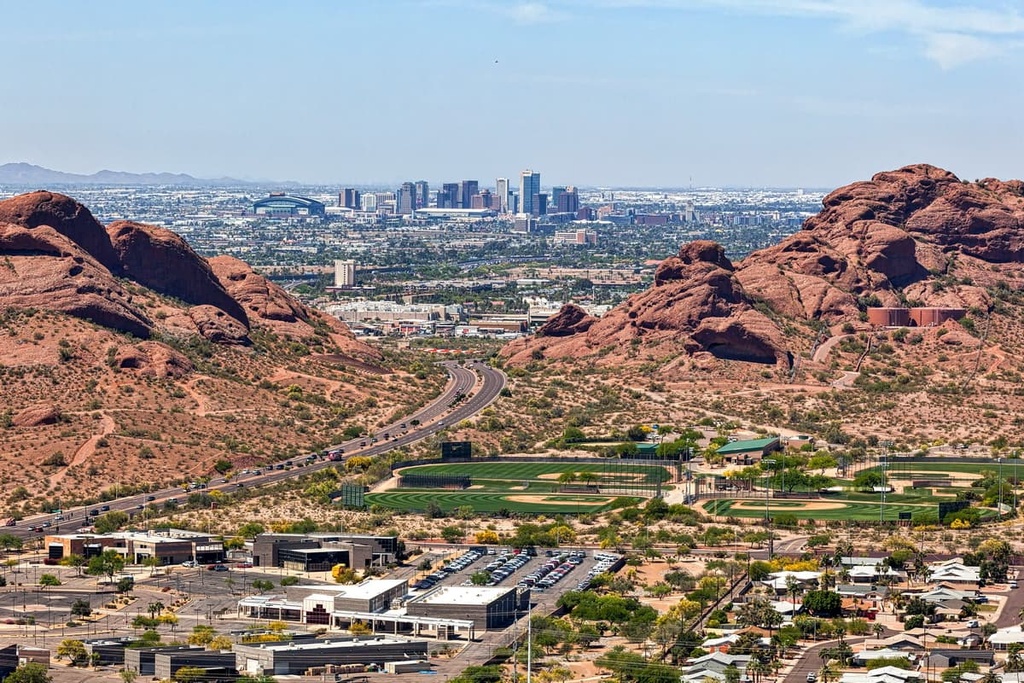
Explore Cabeza Prieta Wilderness with the PeakVisor 3D Map and identify its summits.







